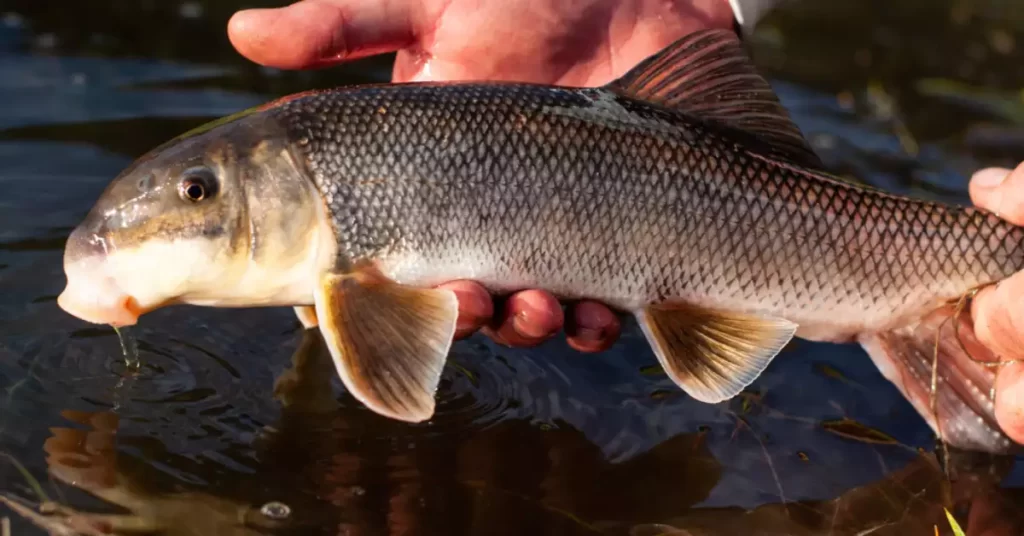Suckerfish, a unique and fascinating group of freshwater fish, are often overlooked when it comes to their culinary potential.
But are they worth considering for your next meal? In this article, we will explore everything you need to know about sucker fish, from their habitat and nutritional value to their taste and how to prepare them for consumption.
Let’s dive into the world of sucker fish and find out if they deserve a place on your dinner plate.
What is Sucker Fish?
General Description
Suckerfish belong to the Catostomidae family, which consists of over 80 different species.
These bottom-dwelling fish are found primarily in freshwater environments across North America.
They are characterized by their elongated bodies, large lips, and cylindrical mouths, which they use to suction onto rocks, plants, and other underwater surfaces.
Habitat and Distribution
Sucker fish are native to North America and can be found in a variety of freshwater environments, including rivers, streams, lakes, and ponds.
They typically prefer slow-moving or still waters with abundant vegetation and a sandy or rocky bottom.
Nutritional Value of Sucker Fish
Sucker fish are not only an interesting addition to the dinner table but also offer a range of nutritional benefits.
They are a good source of lean protein, low in fat, and contain essential nutrients such as omega-3 fatty acids, vitamins, and minerals.
Omega-3 Fatty Acids
Omega-3 fatty acids are essential for maintaining a healthy heart and brain function.
They have been linked to reduced inflammation, improved cognitive function, and lower risks of heart disease. Suckerfish, like many other freshwater fish, is a good source of these essential fatty acids.
Vitamins and Minerals
Sucker fish are rich in essential vitamins and minerals, including B vitamins, vitamin D, calcium, and phosphorus.
These nutrients play a vital role in supporting your overall health, from bone strength to energy production and immune system function.
Taste and Texture of Sucker Fish
Suckerfish has a mild, slightly sweet flavor that is comparable to other white-fleshed fish, such as catfish or carp.
The texture of the meat is firm and flaky, making it an excellent candidate for a variety of cooking methods.
Preparation Methods
Suckerfish can be prepared in many ways, including frying, baking, broiling, and grilling.
However, because of their relatively high bone content, it is essential to either remove the bones before cooking or cook the fish in a way that softens them, such as pressure cooking or slow cooking.

Catching and Cleaning Sucker Fish
Techniques for Catching Sucker Fish
Suckerfish can be caught using a variety of fishing methods, such as angling, bow fishing, and even spearfishing.
They are typically found near the bottom of their habitats and are most active during the early morning and evening hours.
Cleaning and Processing
When cleaning sucker fish, it is crucial to remove the scales and skin before filleting. This will help to minimize any potential off-flavors and make the fish more palatable.
Additionally, be sure to remove the dark lateral line, which can have a strong, undesirable taste.
Environmental Considerations
Before consuming sucker fish, it is essential to consider the environmental impact of your food choices. Suckerfish populations are generally stable, and their harvest is typically sustainable when done responsibly.
However, it is always important to follow local regulations and guidelines regarding catch limits, size restrictions, and fishing methods.
Potential Contaminants
As bottom-feeders, sucker fish can sometimes accumulate higher levels of contaminants, such as mercury and other heavy metals.
It is important to be aware of local water quality and fish consumption advisories before deciding to consume sucker fish caught in the wild.
Recipes and Cooking Ideas
To fully enjoy the taste and texture of sucker fish, try out different cooking techniques and recipes. Some popular options include:
Fried Sucker Fish
Coat the fish fillets in a mixture of flour, cornmeal, and your favorite seasoning before frying them in hot oil until golden brown and crispy.
This method helps to lock in moisture and adds a delicious, crunchy exterior to the fish.
Sucker Fish Chowder
A hearty and comforting chowder is an excellent way to showcase the flavor and texture of sucker fish.
Combine the fish with ingredients like potatoes, onions, carrots, and celery, then simmer in a rich and creamy broth for a satisfying meal.
Grilled Sucker Fish
Marinate the fish fillets in a mixture of lemon juice, olive oil, and your favorite herbs and spices before grilling them over high heat.
The high temperature will sear the fish, creating a flavorful crust while keeping the inside moist and tender.
Frequently Asked Questions
Are sucker fish safe to eat?
Yes, sucker fish are safe to eat as long as they are properly cleaned, prepared, and cooked.
However, it is important to be aware of local water quality and fish consumption advisories before consuming sucker fish caught in the wild.
What do sucker fish taste like?
Suckerfish has a mild, slightly sweet flavor that is similar to other white-fleshed fish, such as catfish or carp.
The texture is firm and flaky, making it an excellent choice for various cooking methods.
Can I use sucker fish as a substitute for other fish in recipes?
Yes, sucker fish can be used as a substitute for other mild-flavored, white-fleshed fish in recipes.
Just make sure to adjust the cooking time and temperature as needed, depending on the thickness of the fillets and the specific type of sucker fish you are using.
A Tasty and Nutritious Option
Suckerfish, with its mild flavor, firm texture, and numerous health benefits, can be an excellent addition to your culinary repertoire.
By being mindful of the environmental impact and potential contaminants, you can enjoy these versatile fish in a variety of delicious recipes.
Whether you prefer them fried, grilled, or simmered in a comforting chowder, sucker fish is a tasty and nutritious option that deserves a place on your dinner table.